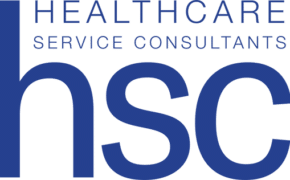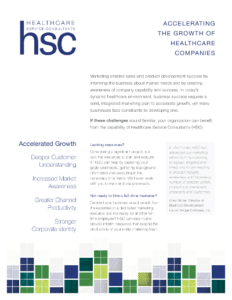In the ever-evolving world of healthcare technology, it’s not uncommon to hear discussions revolving around the latest features of a product. Features do matter. But many people overlook the critical aspect of focusing on the benefits a product offers.
Benefit statements need work, too. Mentioning a product’s benefits include vague statements like “easy to use” or “efficient” leaves a lot of value on the table. To make an impact in the healthcare world, healthcare marketers must delve deeper into the clinical, operational, and financial benefits a product provides.
The following strategic moves help healthcare IT marketers create more engaging messaging.
Avoid Vague Messaging
In gathering feedback, it’s easy to fall into the trap of capturing terms that seem like unique benefits when, in fact, they’re not. Phrases like “it’s easy” or “it’s efficient” may sound compelling at first. Yet, they are subjective and overused. Vague messages lack the power to attract the attention of potential buyers and help them justify a purchase. Even worse, they can convey a sense the organization doesn’t really understand how their product helps.
To elevate your messaging, product marketers need to define clear benefits that are more meaningful to each individual persona. These benefits should resonate with the buyers’ higher-order goals and challenges. By doing so, your messaging will create a deeper and more impactful impression. One that should appeal to product champions and decision makers alike.
For example, consider the process of data migration. Claiming your healthcare IT product can perform data migrations faster and more effectively than anyone else is a good start. However, it’s more powerful to focus on how this directly addresses higher-order end-user goals for each stakeholder. Such as:
- how readily available, clean data can improve clinical workflows.
- how cleaning and normalizing data can improve data access and liquidity.
- how data segmentation and de-identification can allow migrations to enhance the potential for artificial intelligence (AI) and research applications.
Remember, people don’t want to buy a widget. They want to buy a solution to a problem they may not be aware they have.
Build a Benefits Ladder
When we say a product is “easy to use,” or that it makes workflow “more efficient,” what does that mean in the healthcare setting?
- Does it enhance clinical productivity?
- Can it influence the patient or provider experience?
- Can it lead to additional reimbursement or reduce operational costs?
To market a healthcare IT product, it is important to understand its benefits. Not only at the most obvious and generic level, but also at a deeper, more tangible level.
In the context of product marketing, a benefits ladder is a structured framework that organizes the various benefits and advantages offered by a product or service. It exists in a tiered manner with the most specific and impactful benefits at the top. This helps healthcare organizations to better communicate the value of their offerings to their target audience. It provides a more comprehensive and organized view of the value their product or service offers.
Consider a patient-facing mobile app for health management. Instead of discussing individual features, we instead build a hierarchy that fleshes out higher-level, generic statements into more detailed, tangible benefits. Here’s an example.
- Improved Health Management (the most generic benefit statement), which enables:
- Improved Medication Adherence. Providing reminders and tracking for medications to ensure users stay on top of their treatment plan, which leads to:
- Reduced Hospital Readmissions. By helping patients to properly manage their condition and adhere to treatment protocols, hospital readmissions can be reduced.
- Cost Savings. As a result of fewer hospitalizations and healthcare complications, reduced healthcare costs can be realized.
- Improved Medication Adherence. Providing reminders and tracking for medications to ensure users stay on top of their treatment plan, which leads to:
The Importance of Probing Questions
Developing a benefits ladder requires product marketers to sometimes ask difficult probing questions. This allows them to uncover the real problems faced by clinicians, operational staff, financial decision makers, and others. Then, they can determine the full and specific value of solving them from each unique perspective.
A common pitfall for young founders is focusing on the problem from one stakeholder’s perspective. If you’re solely concentrating on clinicians, you might not consider the financial or operational benefits required to justify the price. You may not know if the solution will improve the care provider’s workflow in a meaningful way.
Don’t assume the first question you ask will also be the last one. Instead, continue to probe and dig deeper into the underlying resulting benefits. In doing so, you can discover the full scope and impact of your product’s features.
Role of Product Marketing
Product marketing is the bridge that connects your product’s capabilities to the real, meaningful problems customers face. In essence, product marketing is about elevating the message and shifting the focus from the features of the product to the benefits it can deliver within the clinical, operational, and financial contexts. Product marketing helps the organization achieve this by asking probing questions, having an in-depth understanding of the problems, and defining clear and meaningful benefits that resonate with each persona.
Is your messaging too generic? Do you need help fleshing out a benefits ladder to better communicate your real value propositions across your target audiences? Our healthcare IT product marketers are experts at elevating impactful, targeted messaging that communicates your unique value propositions. Contact us to learn more.




